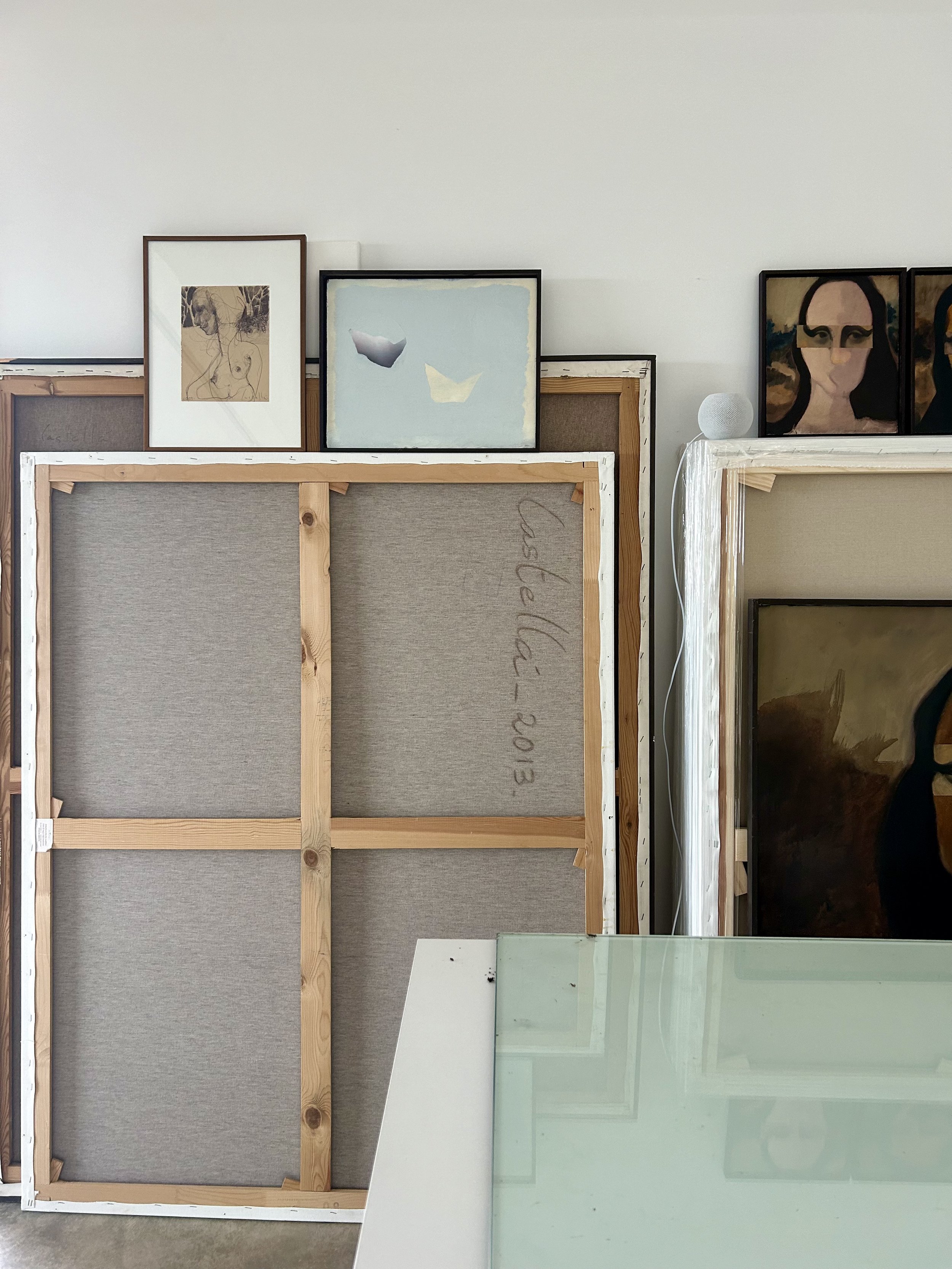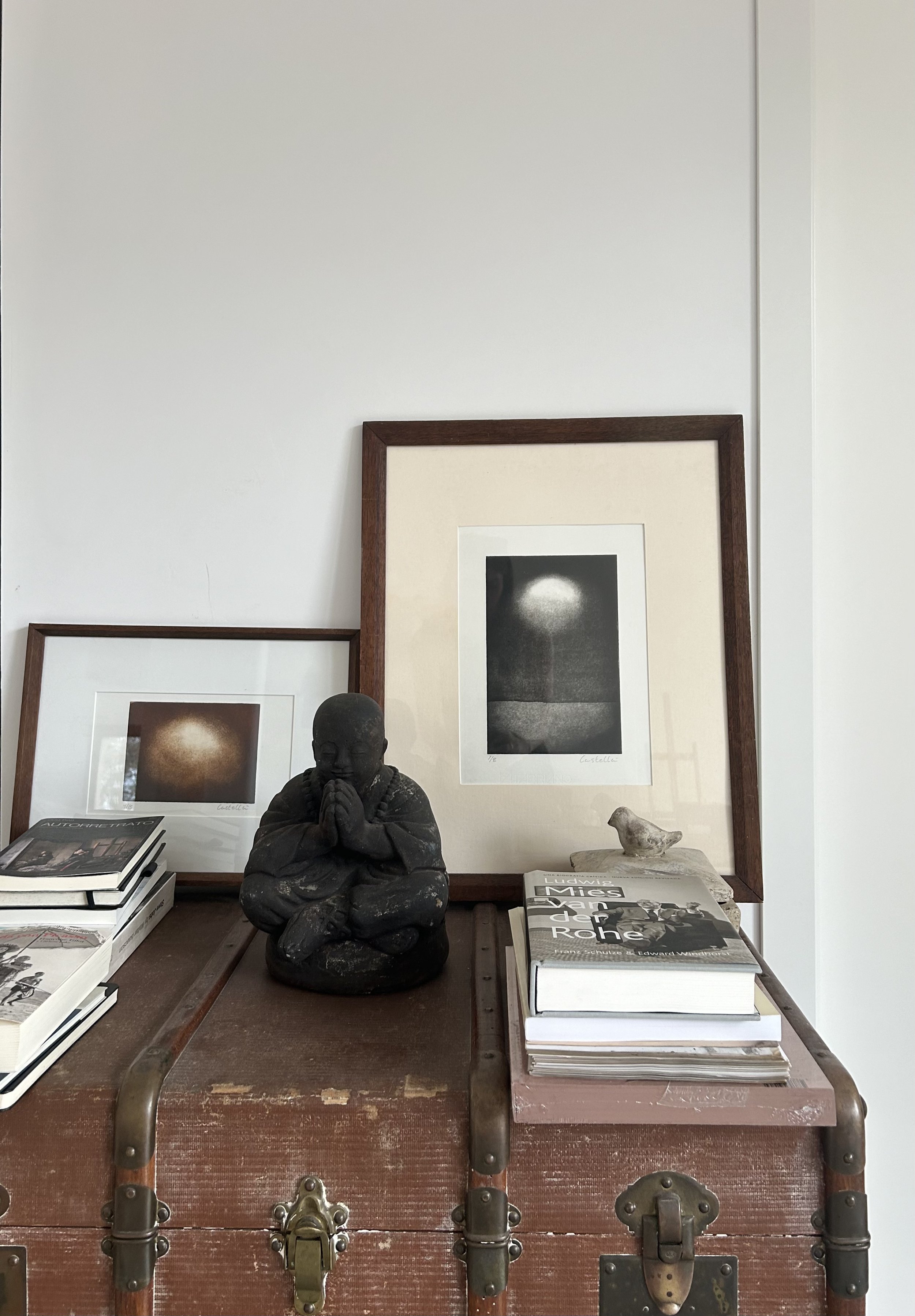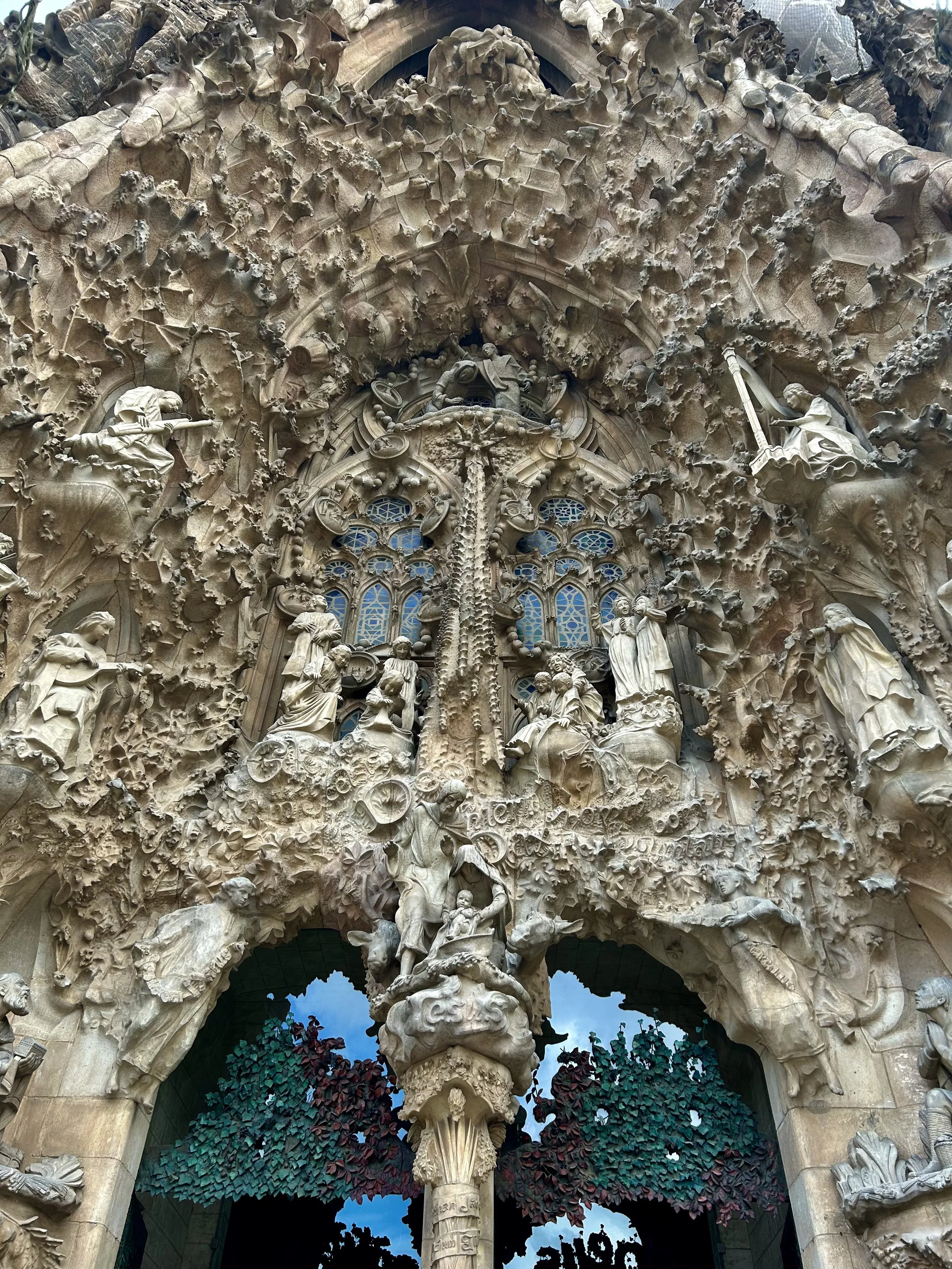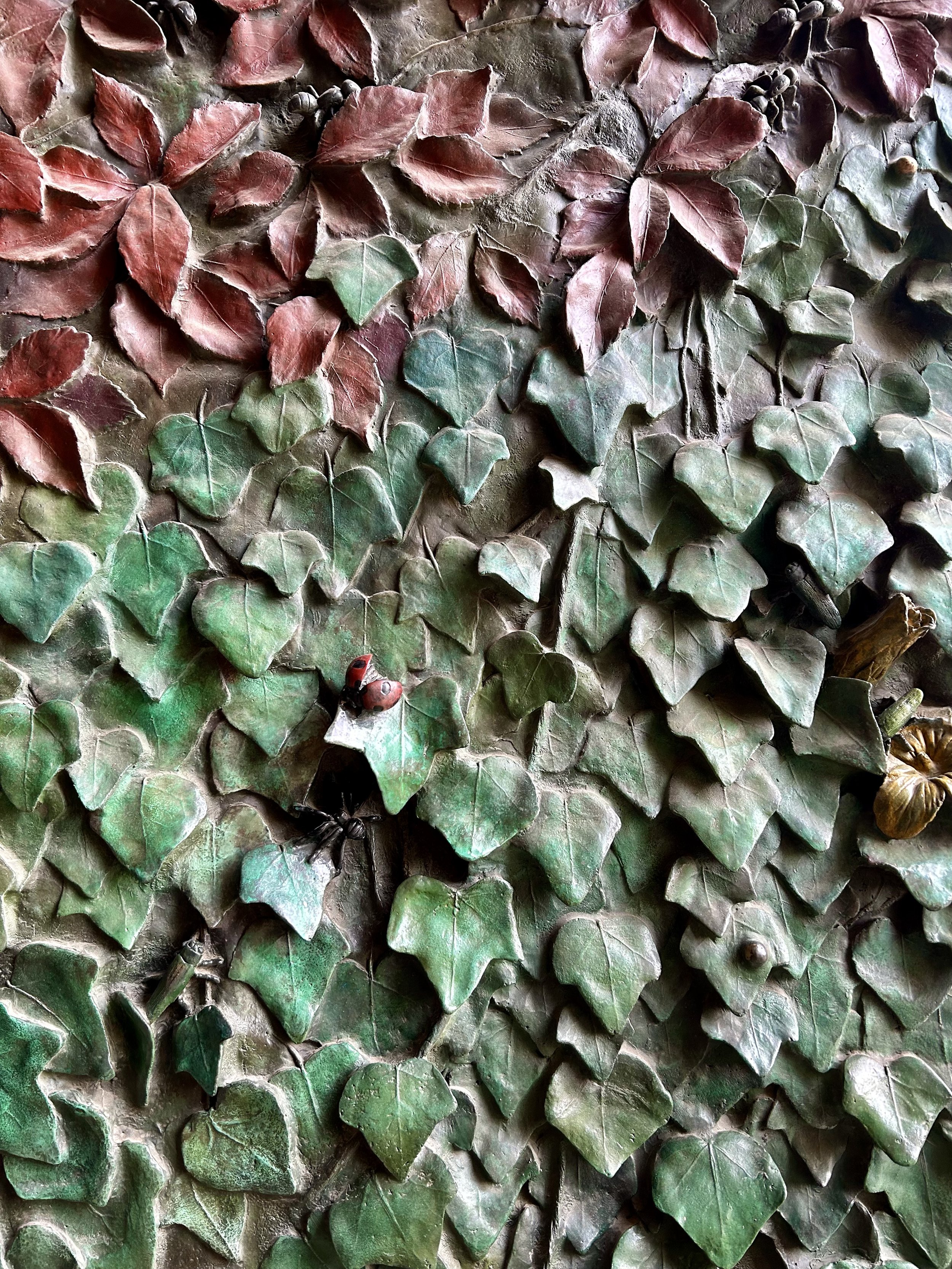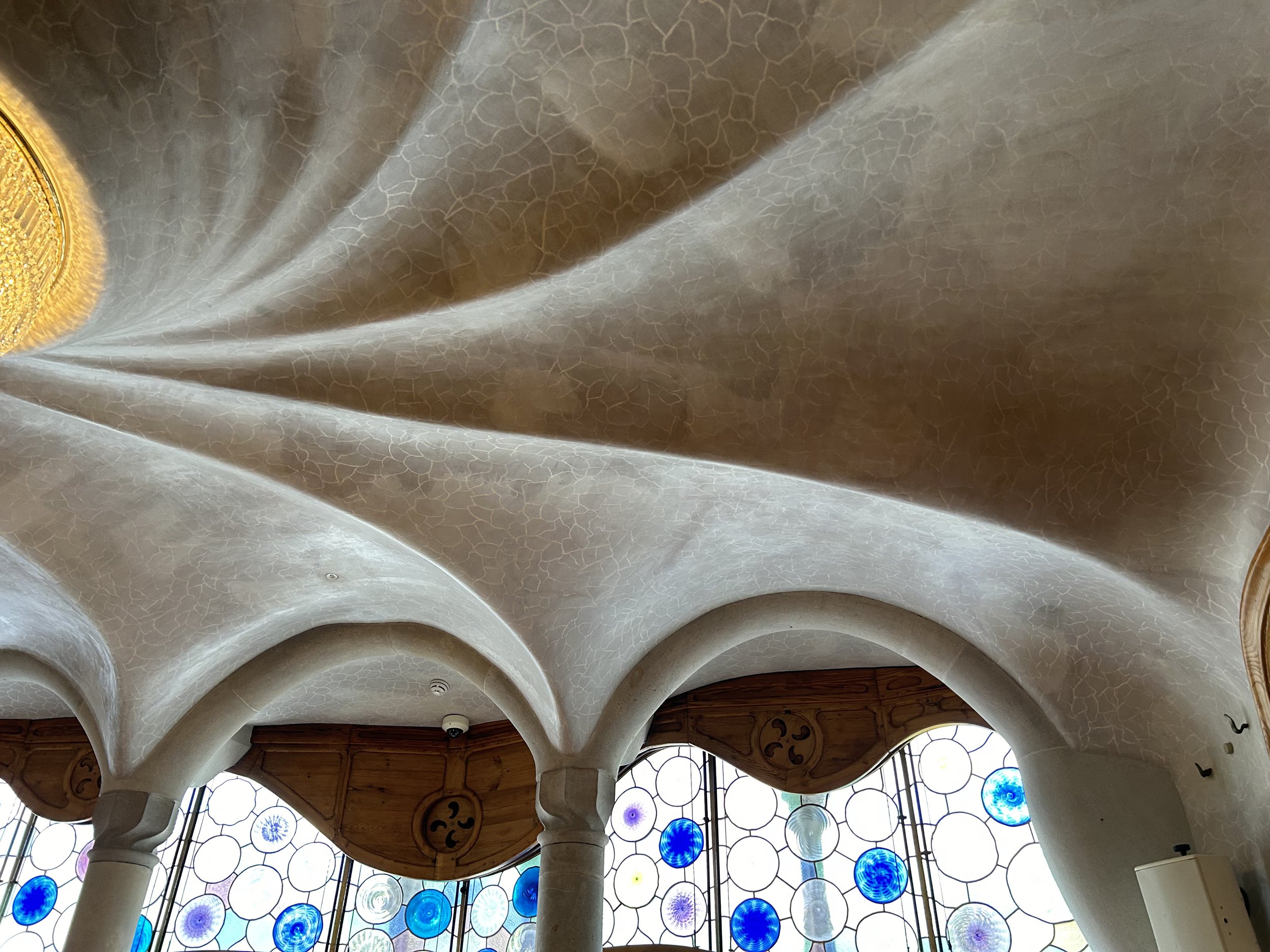Inspiration | A Trip to Spain
About twenty years ago, my aunt and uncle purchased an old (village rumor puts it at about 800 years old), dilapidated home in a small village south of Barcelona. In the next decade, they renovated it to luxury standard and furnished it with art and antiques, producing a one-of-a-kind vision the delights all who come to stay. This summer, I visited for the third time. Needless to say, it continues to inspire me. I thought I’d share this magical home here, along with few other special Spanish spaces we visited.
My Aunt’s Home in Terra Alta, Casa Rumbet
Let’s just start at the top—here is the view from the fourth floor primary suite. As you can see, my aunt and uncle opened up the attic roof to create an on-suite terrace with views of the magnificent countryside. La Terra Alta is known for its red rock formations, olive groves and vineyards, and medieval hilltop towns like this one, Horta de Sant Joan. This terrace is the spot for afternoon cocktails, casual dinners, and stargazing.
Now that you know where you’re headed, let’s take a leisurely tour through the rest of the home . . .
The entryway features Moroccan lighting and prints by a family friend.
Many of the Spanish antiques in the home were actually sourced in Marin and repatriated via shipping container, as Spain doesn’t have the kind of flea markets that France does.
All ironwork was forged by my uncle, artist Reynaldo Terrazas.
La Sala (the living room) features a collection of Mexican masks, Spanish antiques, and modern woodworking by Bay Area artisans that are family friends.
A large console table features Mexican candelabras and a portrait of my uncle in his metal shop in Oakland, where he created architectural finishes, sculpture and artists’ printing presses.
Curtains fashioned from antique lace let in light from the narrow medieval streets.
La Señora herself, my aunt Jody Terrazas. We are on our way to enjoy drinks in the plaza.
As my aunt will tell you, renovating a home abroad is an adventure. She and my uncle had actually envisioned warm white walls throughout the home, but when they arrived to see the work the artisan plastering crew had done, they were shocked but (not immediately but very quickly) delighted to see the bold color choices that were indelibly applied to their home’s interior walls. The kitchen/dining room also features the home’s original fireplace and a new graciously arched window.
Each of the three guest bedrooms has its own charms and unique character. This time, I stayed in the ‘gold bedroom,’ below left, and woke each morning to a real-life Renaissance painting as the sun crept over the landscape and swallows dove through the air. A second guest room features all original stone walls. The kids room is decorated with whimsical blue stencil-work.
The primary suite, as I’ve mentioned, is on the top floor and opens out onto the terrace. It also has a cozy fireplace for wintertime. Its bath is a mix of modern luxury and antique character. My uncle passed several years ago, but my aunt returns at least once a year to enjoy the home they created together as a labor of love and creative collaboration. She enjoys a community of expatriates she considers close friends, and knows all the good local spots to eat and drink. But mostly, being in Spain is about slowing down and truly enjoying the basic pleasures of life—a drink in the plaza, chats with the neighbors, a walk to the local market. I’m just so lucky to get to visit.
If you’d like to learn more about Casa Rumbet, or inquire about renting it out, visit www.casarumbet.com for more information.
Another view from the terrace onto the village of Horta de Sant Joan.
2. Artist Salvador Castillo’s Off-Grid Studio + Home
While staying with my aunt, we were treated to a visit with her dear friends, artists Salvador Castillo and his wife Merce, at their home studio in the nearby countryside. While Salva and Merce live most of the year in Barcelona, they retreat often to this minimalist off-grid sanctuary right on the border of the Terra Alta parklands, in an old olive grove.
The home is powered by solar panel, and its grey water systems are fed by a cistern. All the couple’s drinking water is brought in from a local village well available for use by residents.
The home’s exterior is composed of an earth-based plaster pigmented to match the surrounding land.
The house was sited to frame views of local geologic landmarks from its windows, as in this guest room.
Half of the home can be sectioned off from the other half, in case the couple decides to retire here later in life, and house family or a caretaker in one half of the residence. Currently though, this second half contains Salvador’s art studio—a serene workspace for the creation of his otherworldly paintings and prints.
The living quarters are spartan, inhabited only by the couple’s most meaningful objects, and each one has a story. While visiting, we were treated first to wine in the olive grove, then lunch inside. Salvador served a stew of medieval origin that he learned from his mother. We were entertained by a visit from the local family of red foxes.
3. Gaudi’s Nature-Inspired Architectural Fantasies
The beauty of Antoni Gaudi’s architecture isn’t exactly a secret, so while the following content may not be entirely novel, I can’t help but share and reflect on its power. The Castalan architect ushered in an era of modern architecture that necessitated innovations in all building crafts—including ceramics, woodworking, stained glass, and ironworks—just to meet the brilliant man’s vision. As an artist, I absolutely marvel at someone who could envision with such intricacy worlds that were so far beyond the reality of his time (the architect was born in 1852).
While Spanish architecture and design had previously been remarkable for its over-the-top Baroque flourish, Gaudi’s love of nature infused and revolutionized this characteristic extravagance, marrying religious traditionalism with modern scientific wonder in a style that expressed the beautiful contradictions of a specific place and time.
I first visited La Sagrada Familia, Gaudi’s nature-inspired modern cathedral in Barcelona, 20 years ago. It has been under constructions since 1882, and it was amazing to see it just a year from completion now. I always feel like a bug looking up at a field of daisies and dandelions at sunset when I am inside.
The intricate fractal-like facade of La Sagrada Familia.
A detail of the ironwork on the cathedral’s central doors.
On a smaller scale, Casa Batllo offers Gaudi’s vision of modern living for a single wealthy family, and is a testament to what can be achieved when a client gives a creator carte blanche. Made to evoke the sea, every line in Casa Batllo is a wave, the space undulating around the inhabitant in gentle ripples. Jeweled light floods the interior through bubble-shaped stained glass. But the apartment is no fishbowl—the hand-carved wood and glass doors of its second floor living room were designed to open up completely to the conviviality of the street outside.
The ceiling of Casa Batllo’s living room.
The central stairway rises like a spinal column through the building.
A central airway is clad in tile resembling scales or sea stars.
As I walked through Gaudi’s spaces, enraptured to his unabashed mimicry of nature, I couldn’t help but think that the organic minimalism beloved by designers today (myself included) might be enlivened by a dose of organic maximalism. These exquisite buildings, and everything I’ve shared here, are a reminder that timeless, iconic style is crafted from a commitment to one’s passions, and the willingness to look far beyond the here and now toward something only you can bring into being for the very first time.
A Spain-inspired Vision Board
So here’s what I’m dreaming of now….some imported Spanish drama curated in a an elemental, undone style perfect for California. I’ve included some notes and sources below.
Plasterwork and limewash walls don’t need to be neutral. I’m loving passionate, earthy reds and mysterious greens.
My aunt has plates mounted like artwork on walls throughout her home. The ones pictured above are late 19th century Spanish Labrillo.
Terracotta, anywhere forever. The pendant light is from L’Aviva Home and the tiles are from Clé.
Moroccan influences are everywhere in Spain, where the Moorish kingdom preceded the Catholic one. These lanterns are a perfect touch.
Bold, dark finishes like leather and iron are essential to Spain. These vintage chairs bring that intensity.
The Spanish love to gild the lily. I can appreciate a burnished gold accent with some patina, like this gorgeous antique mirror.
This seashell tile from Clé feels like an updated homage to Gaudi himself. I’m dying to install it in a bath in combination with some blue-green marble. Who’s in?
Thank you so much for joining me on this design-driven summer sojourn to Spain!
Adios + take care,
Elizabeth























